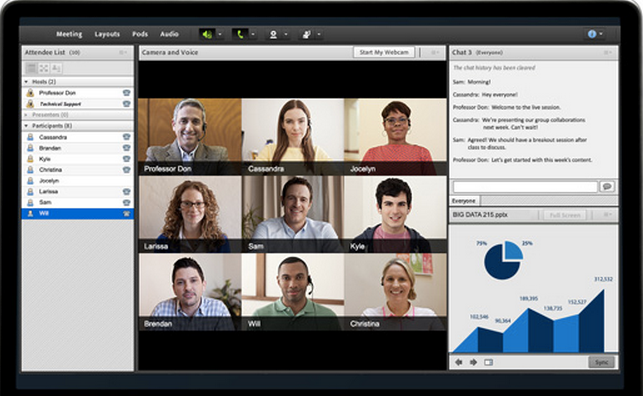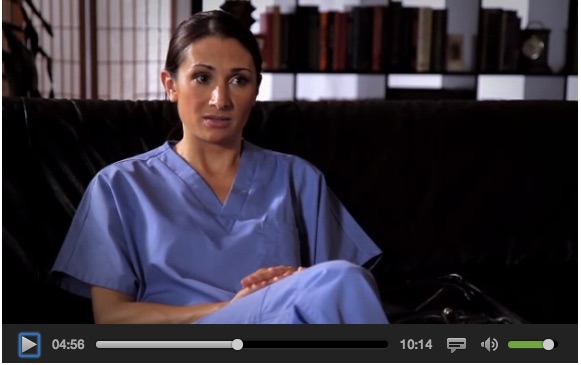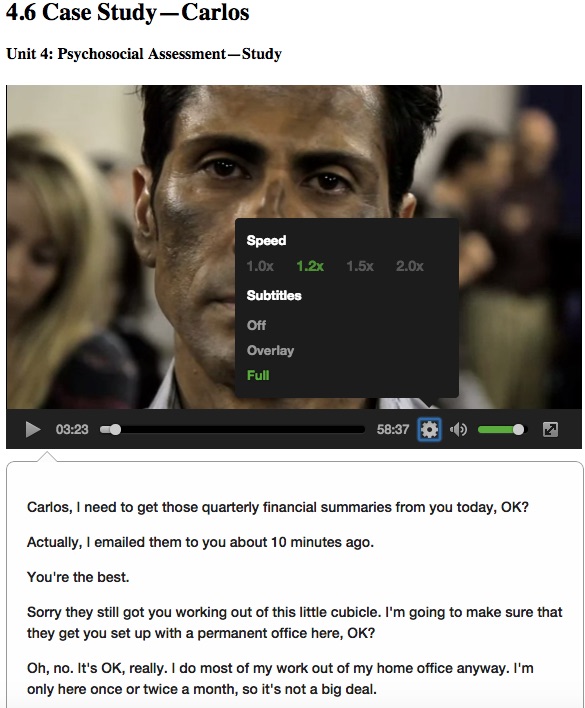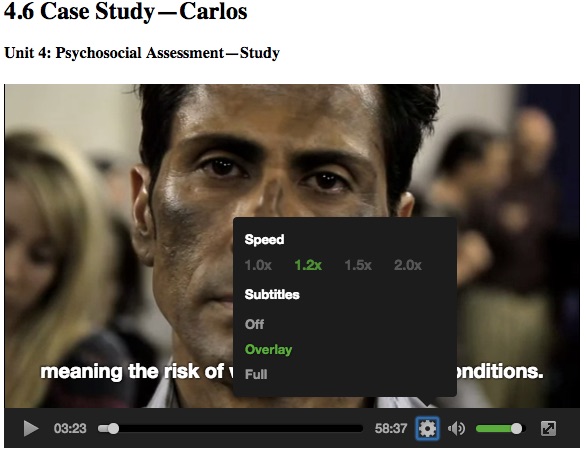2U has now been a public company for over a year, and that had what is easily the most successful education IPO in recent history. Shares have almost doubled from $13.00 at IPO to $25.50 last week. At the same time, there is a swirl of news around their new partner Yale and the Physician Assistant’s program – first the announcement of program from one of the elite of elite schools, second the news that accreditation approval for the new program is not going to be as easy as hoped.
While both aspects are newsworthy, I’d like to dive deeper into their infrastructure and learning platforms. The company is far from complacent, as they continue to make significant changes.
One emerging trend that both Michael and I have been covering is the growing idea that there are real benefits to be gained when pedagogy and platform are developed in parallel. From Michael’s intro to the Post-LMS series:
Reading Phil’s multiple reviews of Competency-Based Education (CBE) “LMSs”, one of the implications that jumps out at me is that we see a much more rapid and coherent progression of learning platform designs if you start with a particular pedagogical approach in mind. CBE is loosely tied to family of pedagogical methods, perhaps the most important of which at the moment is mastery learning. In contrast, questions about why general LMSs aren’t “better” beg the question, “Better for what?” Since conversations of LMS design are usually divorced from conversations of learning design, we end up pretending that the foundational design assumptions in an LMS are pedagogically neutral when they are actually assumptions based on traditional lecture/test pedagogy. I don’t know what a “better” LMS looks like, but I am starting to get a sense of what an LMS that is better for CBE looks like. In some ways, the relationship between platform and pedagogy is similar to the relationship former Apple luminary Alan Kay claimed between software and hardware: “People who are really serious about software should make their own hardware.” It’s hard to separate serious digital learning design from digital learning platform design (or, for that matter, from physical classroom design). The advances in CBE platforms are a case in point.
2U is following the same concept. Their pedagogy is based on small discussion sections (they boast an average class size of ~11 students) within masters level programs, combining synchronous discussions using a Brady Bunch approach.
They also use a Bi-directional Learning Tool (BLT). The following video references the ill-fated Semester Online program, but the tool applies to all their customers.
2U’s approach also adds in custom-developed video segments that act as case studies.
Learning Platform Keeps Connect, Removes Moodle
Initially 2U patched together Moodle as an LMS and Adobe Connect as web conferencing for the video sessions, developing custom tools and applications to tie it all together. In additional to the learning platforms used within the courses, 2U also developed custom enrollment projections, marketing, support and application services, but in this post I’m going to focus on the learning components.
In an interview with James Kenigsberg, CTO, and Rob Cohen, President & COO, they described the rationale for the recent changes as architectural in nature – moving to a more modular approach and improving reliability. James and Rob said that their learning platforms are absolutely a pairing of technology and pedagogy. In their term, agnostic platforms don’t accomplish much.
James described their origins of using Moodle with belief that it’s “OK to start with a bowl of spaghetti code if you understand what you want”, and that this is their second refactoring of code in the past six years. They had already heavily customized the Moodle code, but now 2U will have all Moodle components out of the platform by the end of CY 2015. In their description Moodle was great to start with as the base, but now they need a different approach.
2U relies heavily on Adobe Connect, with access to video tools and rooms available throughout the overall learning platform. The rationale for Adobe Connect (vs. Blackboard Collaborate, for example) in that Connect provides a persistent “room” for each faculty member, allowing them to customize, add their own content & quizzes, setup of polls, and general configuration1. This room is then available to them through their courses. Other tools tend to have separate meeting instances, such that the content and configuration and setup but no longer available after the meeting. For general configuration of the room, faculty members using 2U’s platform can make choices such as only allowing students to speak in virtual room as they raise their hand vs. initiating everyone to talk on unmute.
For the technology stack, 2U is based on Amazon Web Services (AWS) with files saved to Amazon’s S3 file system. The BLT is built on Angular JS.
Accessibility
2U has also taken advantage of the combined platform + pedagogy approach to make some improvements in accessibility as well. For this area, the benefit is more from combining platform and content than pure pedagogy, however.
For sight-impaired students, there is already compatibility with screen readers such as JAWS, but there is a new audio-overlay feature that is interesting. For the case study videos, 2U enables an option for students to hear a narrated audio track in parallel to the recorded video’s playback. For example, in this video from the social work program at USC, the Abby character is talking to a social worker. The audio track option adds descriptions to give the video context for sight-impaired, such as:
Later, Abby rushes into Carol’s office. [dialogue] Abby sits down. [dialogue]
During one transition, Abby describes her memories from childhood, and the audio overlay describes.
In a flashback, ten year old Abby lies across her bed doing homework. Fran looks in. [dialogue] Abby sits up and gathers her books. [dialogue]
This tight integration works because the same people working on the platform are also working on the course material.
For hearing-impaired students, 2U has added two different transcript capabilities. One choice is having full transcript below video2.
Another choice is to overlay the transcript as in closed-caption style.
As there are more efforts to create online courses and programs, the topic of accessibility is becoming more important. Just this month, edX settled with the Department of Justice while there are lawsuits against Harvard and MIT for their usage of the platform.
EdX, an online learning platform that Harvard co-founded with MIT in 2012, entered into a settlement agreement with the Department of Justice on Thursday and will address alleged violations of the Americans with Disabilities Act. That settlement could come to bear on a separate but similar lawsuit against Harvard that revolves around issues of accessibility online.
Namely, the edX settlement will require the platform to become accessible for people with disabilities—including those who are deaf or visually impaired. [snip]
The settlement comes as the National Association of the Deaf sues Harvard and MIT for allegedly discriminating against the deaf and hard of hearing by not providing online captioning both for the courses they offer through edX and the rest of their online content. The private lawsuit, filed in February, accuses the University of violating both the American with Disabilities Act and the Rehabilitation Act, which requires that educational institutions that receive federal funding provide equal access to disabled individuals. Legal experts have said that the suits against Harvard and MIT has merit.
This challenge of supporting students with disabilities within online courses has been a difficult one to solve, particularly as real solutions require both the platform to have generic capabilities, the content (often created by individual faculty on their own prerogative) to follow appropriate guidelines, and for the addition of transcripts / captions and audio.
2U has the benefit of being directly involved in all three areas and by having their learning platforms designed and customized for their specific pedagogical approach.
Standing Apart in Crowded Market
2U’s approach is unique in the crowded market of Online Service Providers, or “enablers”. 2U is vertically integrated and focused on niche programs – high-tuition masters programs at elite institutions. Most of the competition – Pearson EmbaNet, Wiley Deltak, LearningHouse, Academic Partnerships, etc – are going in different directions that include broad offerings (masters, bachelors, broad range of pedagogy).
I was a little late in covering 2U, largely because of my discomfort with two interdependent aspects of their business:
- Focus on elite schools; and
- Focus on high-tuition (between $17,000 and $45,000 per year) programs.
Furthermore, this vertically-integrated company goes against much of the movement towards interoperability and breaking down walled gardens. But the company is growing and seems to be quite successful, and I do like the strong focus on academic quality and student support. It is worth understanding how this tight combination of platform and pedagogy within the company plays out.





Any of the OPM/BSP’s that aren’t focused on brand will be fighting uphill battles in a)recruiting students, and b) remaining in a profitable partnership. The forces affecting the non-brand institutions will limit their online growth as well. If you can take an online program from a branded institution, why wouldn’t you?